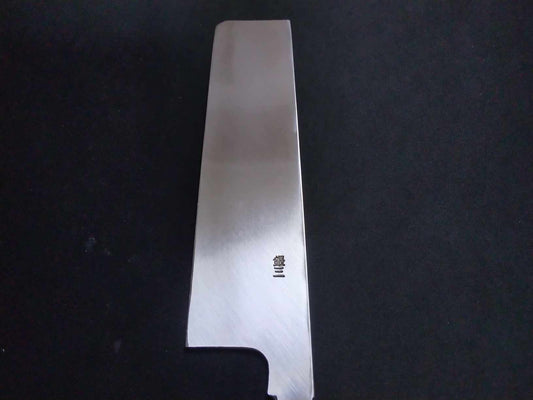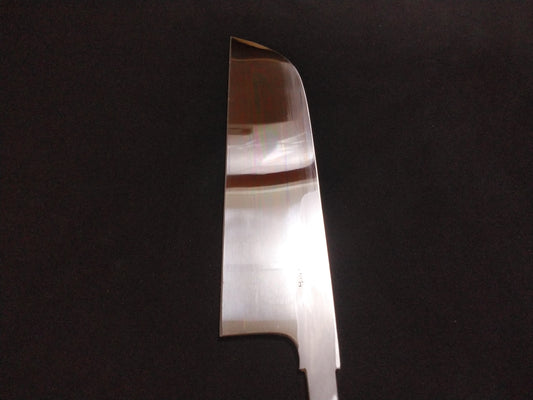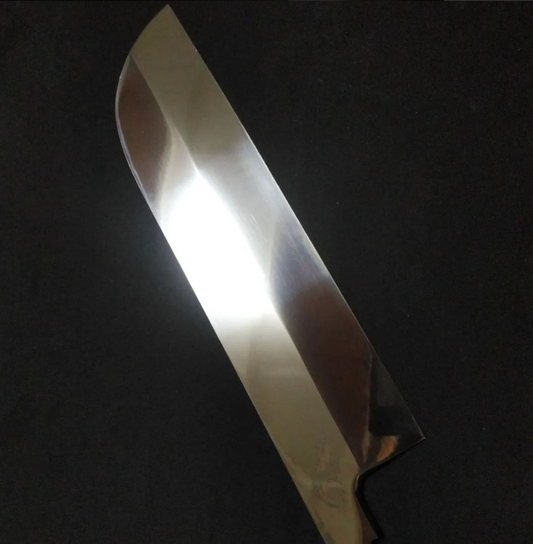
Usuba
-
Precision in Every Slice
Three blades. Three traditions. From the straight precision of the Usuba to the versatile Kamausuba and the delicate Mukimono, each cut reveals the beauty hidden in every ingredient.
-
Usuba Japanese Knife Collection
-

 Sold out
Sold outWhite Steel #2 Usuba 210mm
Regular price $346.00 CADRegular priceUnit price / per$334.00 CADSale price $346.00 CADSold out -
Ginsan Usuba 210mm -Mirror Polished(one side)
Regular price $412.00 CADRegular priceUnit price / per$0.00 CADSale price $412.00 CADSold out -
Blue Steel #2 Mukimono 190mm-Mirror Polished(one side)
Regular price $445.00 CADRegular priceUnit price / per$445.00 CADSale price $445.00 CADSold out -
White Steel #2 Kamausuba 210mm-Mirror Polished(both sides)
Regular price $460.00 CADRegular priceUnit price / per$460.00 CADSale price $460.00 CADSold out -
Super Steel (Honyaki) Mukimono 180mm-Mirror Polished(both sides)
Regular price $593.00 CADRegular priceUnit price / per$0.00 CADSale price $593.00 CADSold out -
Super Steel (Honyaki) Mukimono 200mm-Mirror Polished(both sides)
Regular price $650.00 CADRegular priceUnit price / per$0.00 CADSale price $650.00 CAD -
White Steel #2 (Honyaki-Mizuyaki) Mukimono 180mm-Kido Finishing
Regular price $850.00 CADRegular priceUnit price / per$380.00 CADSale price $850.00 CADSold out -
White Steel #2 (Honyaki-Aburayaki) Kamausuba 225mm-Mirror Polished(one side)
Regular price $889.00 CADRegular priceUnit price / per$380.00 CADSale price $889.00 CADSold out -
White Steel #2 (Honyaki-Mizuyaki) Mukimono 180mm-Mirror Polished(one side)
Regular price $930.00 CADRegular priceUnit price / per$380.00 CADSale price $930.00 CAD -
Super Steel (Honyaki) Kamausuba 240mm-Mirror Polished(both sides)
Regular price $960.00 CADRegular priceUnit price / per$0.00 CADSale price $960.00 CAD
KIREAJI's Three Promises to You
-

1. Forged in the Legacy of Sakai
From Sakai City—Japan’s renowned birthplace of professional kitchen knives—each blade is crafted by master artisans with over six centuries of tradition. Perfectly balanced, enduringly sharp, and exquisitely finished, every cut carries the soul of true craftsmanship.
-

2. Thoughtful Care for Everyday Use
Every knife includes a hand-fitted magnolia saya for safe storage. Upon request, we offer a complimentary Honbazuke final hand sharpening—giving you a precise, ready-to-use edge from day one.
-

3. A Partnership for a Lifetime
A KIREAJI knife is more than a tool—it is a lifelong companion. With our bespoke paid aftercare services, we preserve its edge and beauty, ensuring it remains as precise and dependable as the day it first met your hand.
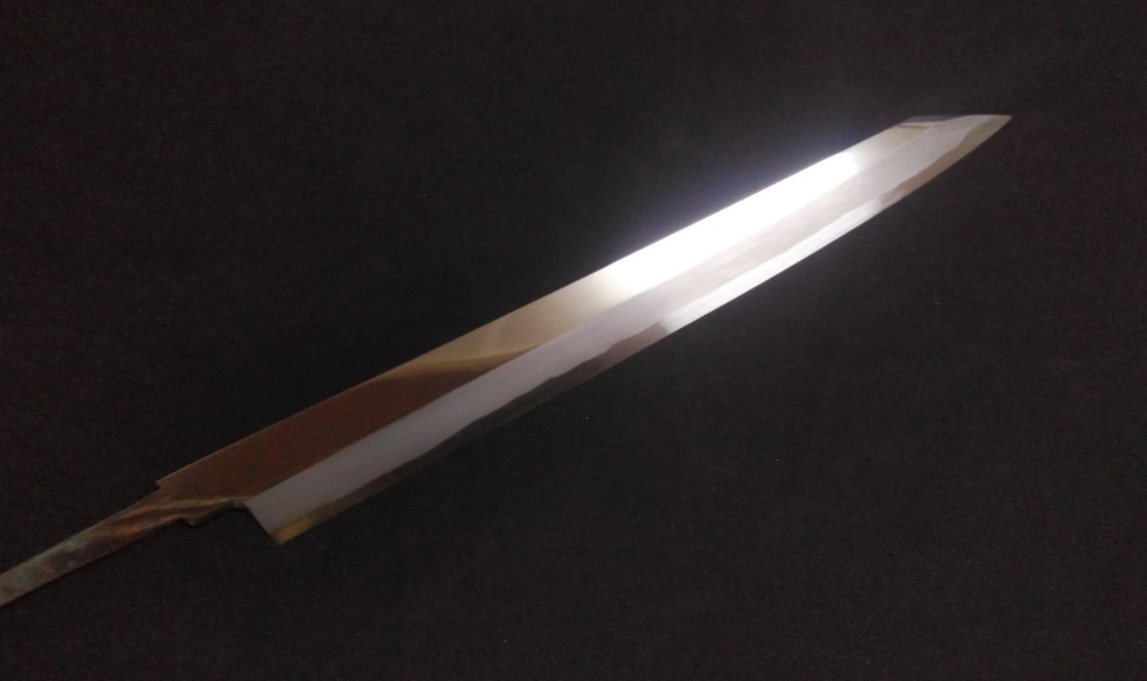
Why Many Product Photos Show Only the Blade
At KIREAJI, every knife is made to order in Sakai, Japan. Photos show the blade before the handle is attached, allowing artisans to perfect the balance and edge for your specific order. Your knife arrives fully finished — tailored just for you.

Global Delivery from Sakai
Across the world, discerning cooks seek authentic Japanese knives from Sakai — Japan’s legendary knife-making city with over 600 years of tradition.
At KIREAJI, we work alongside master artisans in Sakai to fulfill that desire, shipping genuine handcrafted knives directly from the workshop to kitchens worldwide.
-
Usuba
-
Usuba knives come in various types, each tailored for specific tasks. Here, we'll discuss three main types of Usuba knives and their unique features.
-
1. Usuba
-

The Usuba is a traditional Japanese knife primarily used in the Kanto region and is well-suited for cutting tasks. Here’s an overview of its key features and recommended uses:
-
Main Features
Rectangular Blade: The Usuba features a rectangular blade, which provides a forward weight distribution. This design makes it easier to work on the cutting board, allowing for smooth and stable cuts.
-
Advantages
Forward Weight Distribution: The rectangular blade with forward weight distribution enhances efficiency on the cutting board, making repetitive cutting tasks and detailed work more comfortable and less tiring.
-
2. Kamausuba
-

The Kamausuba is a versatile knife that has become popular in recent times. This type of knife is designed to handle both cutting tasks and peeling tasks, making it useful for a wide range of applications. The kama-shaped design allows it to excel in both roles, making it a go-to tool for many chefs.
-
Main Features
- Kansai Design: The Kamausuba is known for its Kansai-style design and has traditionally been used in the Kansai region of Japan. Recently, this type of knife has become mainstream.
- Combination of Benefits: This knife combines the advantages of both Usuba knives and Mukimono knives. Specifically, it merges the benefits of the thin blade from Usuba knives with the precision of Mukimono knives.
- Sharp Tip: Unlike Usuba knives with a rounded tip, the Kamausuba features a sharp tip, allowing for precise cuts and detailed work.
-
Advantages
- Versatility: The Kamausuba incorporates the thin blade advantage of Usuba knives and the sharp tip precision of Mukimono knives, making it suitable for various cutting tasks.
- Enhanced Cutting Efficiency: The Kamausuba is heavier than Mukimono knives, which enhances its efficiency in cutting tasks. This results in improved cooking efficiency and smoother daily meal preparation.
- Ease of Fine Work: The Kamausuba excels at fine cutting and detailed tasks. Its combination of thickness and strength makes it a versatile and user-friendly knife.
-
Overall, the Kamausuba knife combines the best features of Usuba and Mukimono knives, offering versatility and ease of use. Its sharp tip and enhanced cutting efficiency make it suitable for a wide range of cooking tasks, from everyday meal preparation to detailed cutting work.
-
3. Mukimono
-

Mukimono knives, also known as peeling knives, are designed specifically for intricate cutting tasks. Here’s a detailed look at their features and advantages:
-
Main Features
- Narrow Blade: Mukimono have a very narrow blade, which is ideal for precision work. This thin blade allows for easy maneuvering and delicate cutting, particularly useful for tasks like peeling and intricate vegetable preparation.
- Thin Thickness: The blade of a Mukimono knife is not only narrow but also thin, making it sharp and precise. This thinness is advantageous for performing fine cuts such as katsura-muki (peeling vegetables into thin, ribbon-like strips). The thin blade ensures that even the most delicate tasks are handled with ease.
- Sharp Tip: One of the most distinguishing features of the Mukimono knife is its extremely sharp tip. This sharpness is crucial for detailed work, such as decorative cutting or fine detailing in presentation dishes. The precise tip allows for accurate control, making it easier to see and manage exactly where the cut is being made.
-
Advantages
- Enhanced Precision: The narrow width and thin blade make Mukimono knives exceptionally good for precision tasks. The thinness of the blade helps in performing intricate cuts with minimal effort, making it perfect for tasks like decorative garnishes and detailed peeling.
- Ease of Use: Due to the sharpness and thinness of the blade, Mukimono knives offer superior handling and control. The narrow blade allows for fine adjustments while cutting, which is particularly beneficial for tasks requiring delicate touch.
- Versatility in Detail Work: The sharp tip and thin blade of the Mukimono knife make it highly effective for creating intricate designs or performing fine work, such as fruit and vegetable carvings. This makes it an essential tool for chefs and home cooks who want to add an artistic touch to their dishes.
-
In summary, Mukimono knives are specialized tools designed for precision and detail. Their narrow width, thin blade, and sharp tip make them ideal for intricate tasks like peeling and decorative cutting, offering exceptional control and accuracy in detailed culinary work.
-
As we step into the world of Usuba, where tradition meets precision, allow us to present our exclusive Usuba Collection — a lineup of blades crafted by Japan’s most revered artisans.
These are not merely tools, but masterpieces born of heritage, designed for those who appreciate uncompromising quality and timeless design.
Usuba or Nakiri? Choosing the Right Japanese Vegetable Knife for You
-
Both the Nakiri and Usuba are iconic Japanese vegetable knives, but they cater to different needs, skill levels, and cutting styles. Understanding their differences will help you choose a knife that feels like a natural extension of your hand.
-
Nakiri — The Everyday Vegetable Knife
- Double-beveled blade, sharpened on both sides for versatility.
- Rectangular profile makes it perfect for chopping, slicing, and mincing vegetables.
- Favored in home kitchens for its ease of use and ability to handle a wide variety of cutting tasks.
-

Usuba — The Precision Specialist
- Single-beveled blade, sharpened on one side only for extreme precision.
- Also rectangular, but designed for fine, delicate cuts—ideal for professional chefs.
- Excels in tasks like paper-thin vegetable slicing and decorative cuts, where presentation matters.
-
At a Glance
- Nakiri: User-friendly, versatile, perfect for daily vegetable prep.
- Usuba: Requires more skill, rewards you with unmatched precision and refinement.
-

-
Choosing between them comes down to your cooking style: If you want an all-purpose vegetable knife, go Nakiri. If you seek artistry in every slice, go Usuba.
FAQ About Usuba
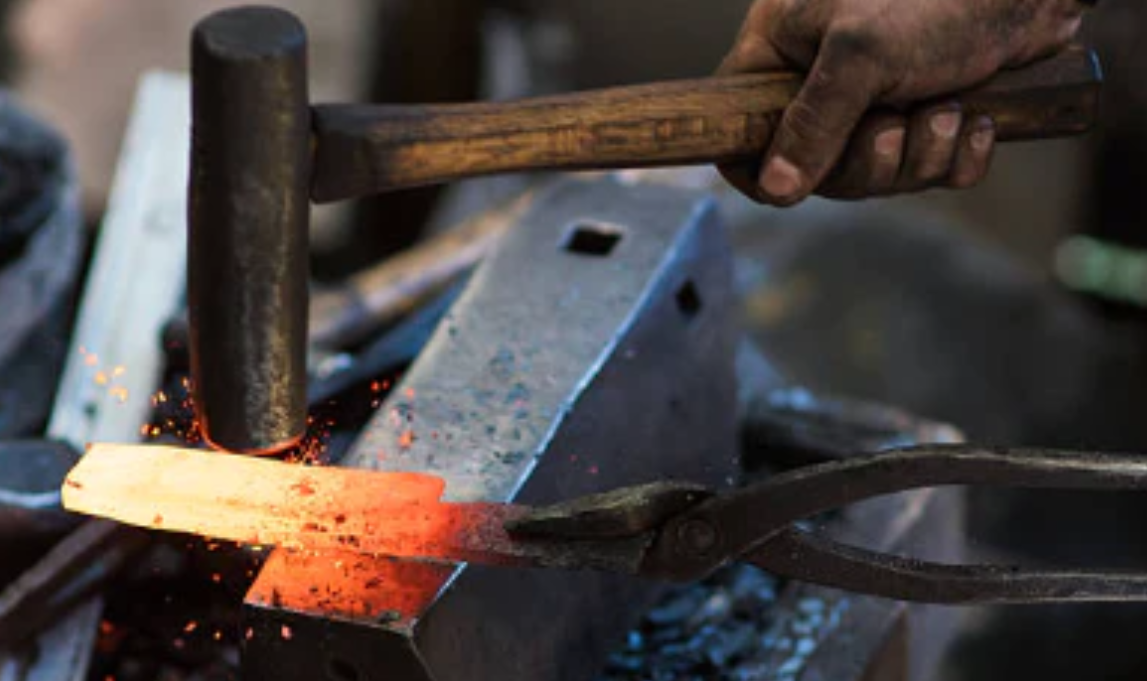
Q1. What are the advantages of an Usuba knife?
The Usuba (薄刃), meaning “thin blade,” is a traditional Japanese vegetable knife designed for precision and finesse. Its ultra-thin, single-bevel edge allows for controlled, clean cuts that excel with delicate vegetables. It is ideal for specialized techniques such as katsuramuki (rotary peeling), sen-giri (julienning), fine chopping, and decorative cuts. Because it slices smoothly with minimal resistance, it reduces user fatigue while delivering sharp, straight cuts that enhance the beauty of garnishes and vegetable dishes.
Q2. What is an Usuba used for?
The Usuba is primarily used for cutting, chopping, and peeling vegetables in Japanese cuisine. Among the three essential traditional knives—Deba, Yanagiba, and Usuba—it is considered the most technically demanding to sharpen because of its straight, single-bevel blade profile, which requires precision and consistency.
Q3. What is the difference between a Mukimono and an Usuba?
Both are single-bevel knives for vegetables, but they differ in design and purpose. The Mukimono, originating in the Kanto region, has a thinner spine and a pointed, rhombus-shaped tip, making it ideal for decorative peeling and intricate garnishes. The Usuba, by contrast, has a broader, heavier blade with a flat edge, better suited for straight, clean cuts and katsuramuki.
Q4. Which should I choose: Nakiri or Usuba?
Neither is inherently better; it depends on skill level and purpose. The Usuba is for professionals and experienced users who require maximum precision and are comfortable handling and sharpening a single-bevel blade. The Nakiri, by contrast, is double-beveled, easier to control and maintain, and better suited for home cooks and general vegetable preparation. Your choice depends on your comfort with traditional Japanese knives and the level of refinement you seek.
Q5. What does “Usuba” mean in Japanese?
“Usuba” is written as 薄刃, with 薄 (usu) meaning “thin” and 刃 (ba) meaning “blade.” The name directly reflects its defining characteristic: a thin blade designed for delicate vegetable work.
Q6. Is the Usuba difficult to master?
Yes. More than most Japanese knives, the Usuba requires precise technique and regular practice to use effectively. Its thin, straight edge can chip if mishandled, and sharpening demands accuracy to maintain a flawless flat bevel. For chefs trained in traditional Japanese cuisine, mastering the Usuba is a mark of true skill and artistry.

The Soul of Craftsmanship
-
The True Value of the Usuba — Precision That Preserves Beauty
The usuba knife is one of the most essential tools for chefs working with delicate ingredients. Its name, meaning “thin blade,” reflects its purpose: to handle fragile foods such as tofu, tomatoes, and leafy vegetables with precision and respect. With its finely honed edge, the usuba allows chefs to cut without crushing, preserving both texture and appearance.
-
Take tofu, for example. A thicker blade exerts unnecessary force, often causing the block to collapse. But with an usuba, the blade glides effortlessly, leaving the structure perfectly intact and presenting the ingredient’s natural elegance directly on the plate.
-
Crafting such a knife is not simply a matter of making the blade thin. It requires a delicate balance between razor-sharpness and durability, achieved only through years of skill and experience. Every usuba embodies the mastery of the craftsman who forges it.
-
For chefs who value the individuality of ingredients, the usuba becomes more than a tool—it is a trusted companion that transforms cooking into an art form, honoring each ingredient’s beauty with every cut.
How Japanese Knives Are Made: The Sakai Tradition
VIDEO PROVIDED: JAPAN TRADITIONAL CRAFTS AOYAMA SQUARE (YOUTUBE)
-
Sakai Forged Blades — Six Centuries of Unrivaled Craftsmanship
Loved by chefs around the world and trusted by 98% of Japan’s top culinary professionals, Sakai knives are more than tools—they are the living legacy of over 600 years of master craftsmanship.
-
At KIREAJI, we work directly with the Shiroyama Knife Workshop in Sakai, Japan, ensuring every blade is hand-forged, finished to perfection, and shipped straight from the workshop to kitchens across the globe. No middlemen. No mass production. Only authentic, artisan-made knives, crafted to elevate your cooking for a lifetime.




